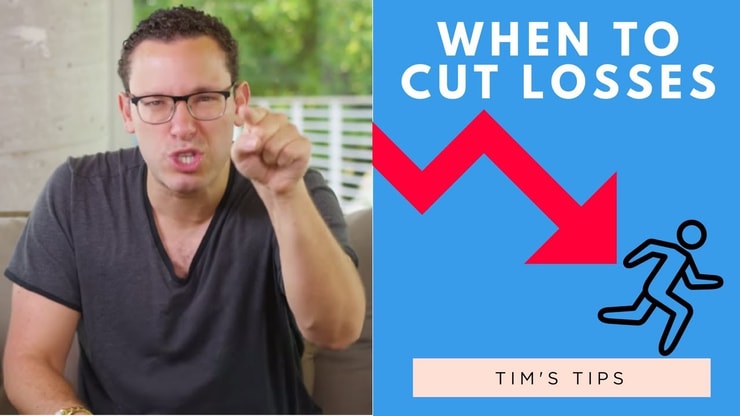Buy low, sell high … that’s every trader’s dream, right?
The concept may be simple, but making it work can be pretty complex. Just because a stock is priced low doesn’t mean the price will skyrocket and earn you insane profits.
To improve your chances of potential profits, you first must learn how to find undervalued stocks and learn how to take advantage of them.
Here, I’ll break down the art of value investing in a way that is specifically geared toward low priced stock traders. In this post, you’ll learn what undervalued penny stocks are, how to find them, and how to trade them in 5 simple steps.
Table of Contents
What Are Undervalued Penny Stocks?

To really grasp what an undervalued penny stock is, you’ve got to break down both parts of the phrase and gain an understanding of both undervalued stocks and penny stocks.
Since they’re easier to define, let’s start with penny stocks.
The name is slightly misleading: while some penny stocks are sometimes traded for actual pennies, this isn’t always the case. Rather, penny stock is a term that can be assigned to any number of low priced stocks--typically those trading for five dollars or less per share.
Penny stocks are my bread and butter and key focus as a trader. I have found that trading penny stocks has been the most effective way to grow my account quickly, and in my Trading Challenge, I teach my students how to follow the techniques that have worked for me in the past.*
OK, so you understand what penny stocks are. Now, what about undervalued stocks?
An undervalued stock, also referred to as a value stock, is a security that’s selling well below what it could or should be selling for. In the trading sphere, this is called its intrinsic value.
That phrase sounds mystical, and actually, it kind of is. Intrinsic value is the perceived value of a stock. Intrinsic value isn’t an exact science--really, it’s just an educated guess based on what facts are available.
It’s figured out by looking at factors like the business model and the market and considering things like earnings reports to figure out whether a stock is valued appropriately, overvalued, or undervalued.
There’s a very important distinction between a low priced stock and an undervalued stock, though.
Just because a stock is cheap doesn’t mean it’s undervalued. Undervalued stocks can be found at any price point and in any number of different sectors.
So when referring to an undervalued penny stock, you are not just referring to the cheapest of the cheap. You’re referring to a low priced stock that is trading for less than its intrinsic value.
To review: not all penny stocks are undervalued, and not all undervalued stocks are penny stocks.
Benefits of Trading Undervalued Penny Stocks
Why trade undervalued penny stocks? Here are a few of the benefits:
Value investing is a proven strategy. Does value investing work? Just ask Warren Buffet, who might be the most famous (and rich) value investor out there.
Building upon the principles and work of Benjamin Graham (aka “the father of value investing”), Buffet famously made a fortune using this style of trading.
Value investing has worked successfully for many traders over the years, and rewards traders who are willing to do the in depth research necessary to suss out the best undervalued stock trading opportunities.
It’s accessible to traders with small accounts. We can’t all be Warren Buffet, and we certainly can’t all trade with an account of his size. However, it is possible for traders with small accounts to utilize the tried and true techniques of master traders and apply them to trading undervalued penny stocks.
It rewards research. Are you willing to research stocks before you buy? If so, you’ve got a leg up on the majority of traders out there. Seriously: there are a lot of traders who don’t even look at the fundamentals or charts for a given stock--they just hear some buzz about it, see that it’s low priced, and figure they can’t lose.
Wrong! You can lose big, even with low priced stocks. Lower priced stocks tend to be more volatile because the companies are less established and have a higher likelihood of failure. That’s why it’s so important to do your research.
Research is always important, but even more so when trading undervalued penny stocks.
Doing thorough research is what helps you identify the best contenders, and separates you from the rest of the jerks who are just chasing the most shiny stock they heard about on some promoter’s Twitter feed.
Potential account growth. The idea behind buying undervalued penny stocks is that you’re in on the ground floor.
You’re buying a stock that for whatever reason is not trading at an appropriate price. So, you buy at a very low price, hoping that the stock will go up to the point you think it should be at and it may go up in price, which could help your account grow.
Avoid overvalued stocks. Even with your best efforts, you might not always be able to identify undervalued stocks accurately.
However, a positive side effect of working through the process of trying to find undervalued stocks is that you’ll likely weed out overvalued stocks. These are stocks trading above their intrinsic or perceived value. Don’t let them distract you!
How to Find Undervalued Penny Stocks in 5 Steps

I’ve got good news and bad news.
The bad news is that undervalued stocks aren’t necessarily easy to find. Often, these stocks aren’t in the public eye, otherwise they probably wouldn’t be undervalued.
It can also be tricky to identify undervalued stocks because a quick Google search into the company might reveal bad news, which might throw many off the scent of what could be a hot stock in the near future.
Seeking out under the radar companies that may have misleading news makes it a tricky prospect to find undervalued stocks that could / should be trading at a higher price.
The good news is that it’s not impossible to find undervalued penny stocks--it just takes practice.
There are methods that every trader can do to narrow down the choices for potential undervalued stocks to trade. Follow these steps:
#1 Undervalued Penny Stock Indicators
There are several indicators that can be used to narrow down the choices for undervalued penny stocks, including:
Book Value: This is the sum total of all of the company’s assets (with liabilities removed) that is divided by the current number of shares outstanding.
If this figure is higher than the current price per share, it could be a sign that the stock is undervalued.
It’s based on the value of the company’s assets, which can help you determine if the company is sound in its finances. However, it’s an imperfect art because you can never know how much a company would fetch for sale or what would happen if it went bankrupt.
P/E Ratio: That’s short for Price-to-Earnings ratio. The P/E Ratio is calculated by taking the price per share and dividing it by the 12 month EPS (short for Earnings Per Share).
For example, say a stock is priced at $2 per share. Now, say the EPS for the year was $0.20. The P/E would be 10, which would be the amount that traders would be willing to pay, dollar for dollar, on earnings.
Simply computing the P/E isn’t enough, though, because this can be relative in different industries. For best results, calculate the P/E ratio and then take it one step further by comparing it to stocks in the same sector.
PEG: Let’s take it one step further with the PEG, or P/E to Growth Ratio. Once you’ve calculated the P/E, you can also divide the P/E number by the expected EPS for the next year.
This can help explain how a stock is valued, which can help you consider potential future growth. If you calculate the PEG at 1, that’s a good baseline to tell you a stock has a fair value; below could be undervalued, above could be overvalued.
More Breaking News
- Denison Mines Corp Stock: Is It On The Edge Of A Boom Or A Bust?
- Werewolf Therapeutics Inc.: Surge or Setback? Decoding Recent Moves
- Is TeraWulf Stock Heading for Record Highs?: Breaking Down Its Recent Market Moves
#2 News Catalysts
Much of determining whether or not a stock is undervalued is a matter of educated guesswork.
In your research, you’re looking for evidence that can support your theory that the stock is undervalued. One of the most popular and effective ways to support your case is to look at the news surrounding a stock.
When looking at the news surrounding a company, you want to be looking for things that support potential for growth.
Is the company in a sector or field that is currently heating up in the news? For example, right now it’s all about CBD stocks. At the time of this writing, this sector is seen as one of the biggest growth potential.
If the company is part of a trending sector that is getting a lot of news coverage, this could be a good sign, even if the price is low. Even if the stock itself hasn’t moved much in price, simply being part of the trend could move the price in the not too distant future.
Even if the company hasn’t had good news and even if it’s had some bad news in the recent past, it could still be poised for growth.
However, just because a company has growth potential doesn’t mean it will be realized in the near future, or ever, really. It still is something of a roll of the dice.
#3 Stock Chart Patterns
I’m all about stock chart patterns.
They’re the foundation of my personal trading style, and reading charts is one of the most important lessons I try to convey to my students.
Things move in cycles in the market, and charts can help you determine what patterns are playing out with the price action of a stock.
When you begin to read stock charts, chances are you’ll start to notice patterns emerging. In my Trading Challenge, I teach you how to identify common ones like the head and shoulders pattern or supernovas.
Once you begin to understand the nature of these patterns and anticipate them, you can use this knowledge to inform your trades.
With undervalued penny stocks, looking at the chart is of paramount importance because it can tell you things that the news and fundamentals might not be able to.
If you see that the price is breaking new highs or lows and following a repeating pattern, you can begin to anticipate the price action moving forward and plot out intelligent entry and exit points.
#4 Trading Plan
Once you’ve figured out a few potential stocks that you think may be undervalued, it’s time to roll up your sleeves and work up some trading plans.
A trading plan is just what it sounds like: a written plan that you intend to follow if and when you execute a trade.
While there isn’t just one format to follow for a trading plan, a good one will include things like why you’ve decided to make the trade, why the stock in question is worthwhile, and what you specifically hope to gain.
You also plot out your entry and exit points, which are so important for making trades to ensure that you maximize potential profits and minimize potential losses.
Your trading plan should expect the best but be prepared for the worst, meaning you must have pre determined stop loss (whether mental or real).
Having a trading plan at the ready will help you be prepared and as unemotional as possible as you enter a trade.
When it’s written down physically (ether on a document or on paper) you’re more likely to follow your own rules and avoid getting headstrong and trying to force a trade to happen.
A trading plan can help you tailor trades to your style, helps you consider potential outcomes, and helps you remain tactical during the trade. All of these are things that separate the pros from the amateurs. Which camp do you want to be in?
Put another way, without a trading plan, you’re basically gambling. Is that what you want to do with your hard earned money?
#5 Stock Screener
You could think of a stock screener like a kitchen strainer. But instead of straining pasta from the water you cooked it in, you’re straining the most promising stocks and leaving the rest.
A good stock screener like StocksToTrade lets you screen the stocks based on various criteria you’ve set up.
A stock screener can help you separate the stocks that meet your criteria (for example within a specific P/E ratio range, within a particular market cap size, etc) so that you can focus on the ones that are most relevant to your plans and theories.
Your stock screener doesn’t do all of the work for you, but it can help you create a strong watchlist of stocks so that you can focus on the most promising ones and create trading plans so that you will be prepared when the time is right.
I use a stock screener every single day, not only to find stocks to trade but to monitor stocks that are already on my radar.
Staying up to date on the most recent information with a stock via the screener can alert you to changes that could affect whether or not you should make a trade and help you remain on top of your existing positions.
Tips on How To Trade Undervalued Penny Stocks
Here are some final tips on how to trade undervalued penny stocks.
Create Your Own Stock Watchlist
A watchlist is like your little black book of stocks to trade. You’ve got their number, and you’re not afraid to use it when the time is right.
To create a watchlist, you use a combination of technical and fundamental analysis to figure out the most promising undervalued penny stocks that you want to keep track of.
Once you have a strong list of stocks, you can create trading plans and monitor them until they meet your criteria. You may add stocks or drop stocks off the list at any time.
Need help learning how to make a watchlist? This post covers it in greater detail.
Set Stop Losses
It’s fun to dream about all the profits you could potentially make from a trade. This is important, because it can keep you inspired and motivated to do your research so that you can reach your goals.
While it’s far less fun, it’s of equal if not greater importance to consider how much you could lose, too. This keeps you aware of the potential risk and helps you take precautions.
Stop losses are one of the most important tools traders have at their disposal. If you’re not good at cutting losses yourself (and so many are not), stop losses will help you exit a trade quickly and mercilessly.
Stop losses can be executed as orders, so that you’ll sell your stock when it reaches a certain point, say a loss of 10 percent.
Personally, I don’t use market stops, because they let market makers see the orders and fiddle with the price accordingly, collecting commissions and leaving you in the dust.
I prefer to use mental stop losses, which are the same thing but without an actual order. This is not easy, because I have to hold myself accountable to get out of the trade if the price reaches a certain point.
It takes a ton of willpower but over the years I’ve gotten good at heeding my own plans and following my own advice. When I don’t, I usually suffer as a result!
Never Stop Learning
I’ve got a tip that can potentially maximize your success not just in trading but in life.
Here it is: never stop learning.
When you stop learning, you start dying. This is always true in the stock market, and especially true when trying to identify undervalued penny stocks.
The landscape is ever changing, and you have to be able to adapt. Education is the key to being able to continue to adapt. By constantly learning, you’ll constantly be exposed to new ideas and inspirations that will help you avoid becoming stagnant.
Like with any type of learning, great guidance can help keep you motivated and help expose you to ideas and information you might not come across on your own.
My Trading Challenge is a resource designed to not only educate you on the art of trading, but to help you become a trader who can think for him or herself.
As part of my Trading Challenge, I give all of my participants access to all of my trades and all of my recommendations so that we can grow together and that eventually you can begin to get smarter about making your own moves in the market.
If you want to follow my approach and continue to evolve and learn the market, consider joining me.
The Bottom Line
Trading undervalued penny stocks allows traders with small accounts to make use of the classic trading approach of buying low and selling high.
It’s not always easy to sniff out undervalued penny stocks. However, by following the tips and tricks of many successful traders before you, you can begin to develop an eye for undervalued stocks and learn how to make the most of them.
Of course, like any other style of trading, it’s ultra important to do in depth research before executing a trade. Just because a stock is undervalued doesn’t mean it will deliver profits!
Do you have experience with trading undervalued penny stocks? Leave a comment and tell me about it!







Leave a reply